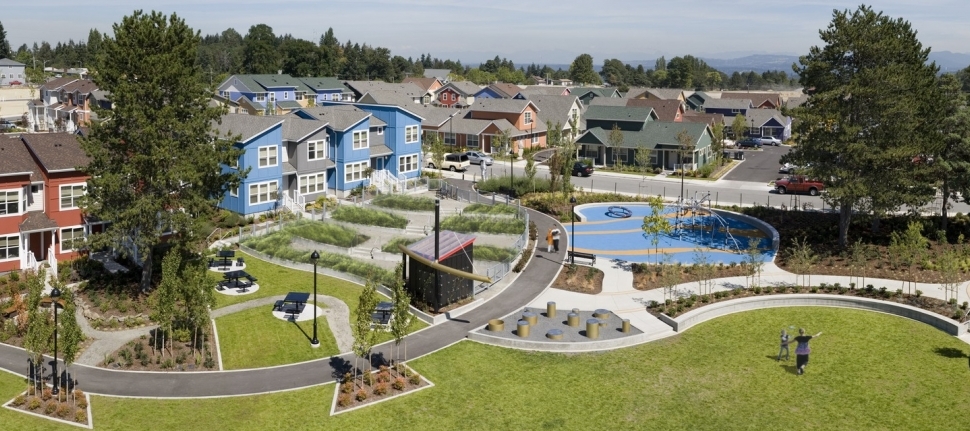Greenbridge Master Plan, King County, Washington
“From the outset Greenbridge sought the input of its community with early design meetings conducted in six different languages to reflect its diverse residents. This inclusive process has resulted in a vibrant, art-filled neighborhood that connects its residents through play, gardening, walkable and bikable streets. This project will change lives,” said Joanna Frank, Executive Director, Center for Active Design.
The Greenbridge Master Plan includes innovation in using Active Design strategies in site planning for housing mixed with recreational facilities. Upon receiving a HOPE VI grant from the U.S. Department of Housing and Urban Development, the King County Housing Authority commissioned GGLO to develop a plan for the revitalization of an existing affordable housing site in Seattle. Major challenges to revitalizing the 100-acre site included creating a walkable design that fit within the context of the existing diverse, low income, low-density neighborhood. The challenge grew even further with the goal of transforming the single-use residential configuration into a vibrant mixed-use neighborhood.
Innovations occurred at the design as well as policy levels. Placemaking was achieved with particular creativity for this project type, with over twenty art elements commissioned. Art is located in relation to the reserved existing trees to enrich sensory cues that support walkability and create nodes for community gathering. A number of regulatory changes were required by King County in order to accomplish the desired design outcome. An innovative Demonstration Ordinance, supported by King County, enabled a number of variances to Land Use and Building Codes, and allowed for several alternative design solutions to achieve affordable housing in a low-impact development.
The Greenbridge Master Plan integrates Active Recreation and Active Transportation strategies seamlessly. To support the livability and health of residents, the design team focused on four elements: connectivity; open space diversity; adjacent uses; and placemaking. A variety of pedestrian routes pass by many types of destinations and encourage residents of different ages and abilities to walk instead of drive. Open spaces ranging in size, such as community parks, food gardens, and pocket parks, are located throughout the site and connected by sidewalks, trails, and paths. These recreation spaces are also located alongside adjacent uses, such as homes, schools, and community centers, which put “eyes on the street” and increase safety.
